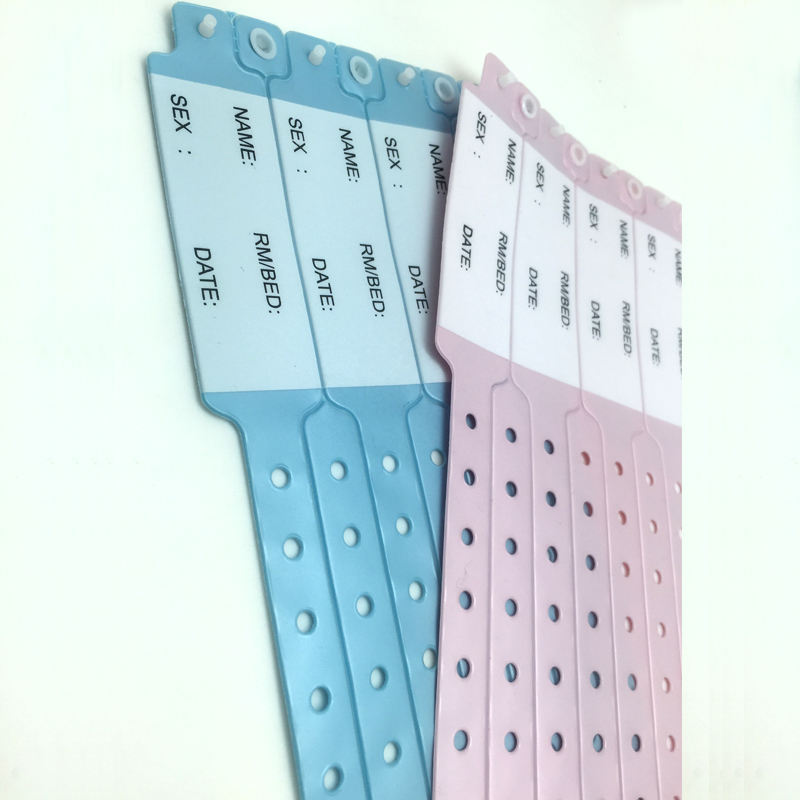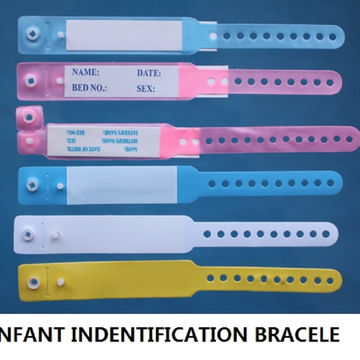The Growing Value of Patient Identification Band in Modern Healthcare
The Growing Value of Patient Identification Band in Modern Healthcare
Blog Article
Why Client Identification Bands Are Crucial for Every Healthcare Facility
In the complex landscape of health care, individual identification bands act as a fundamental component in safeguarding person security and reducing clinical mistakes. These bands supply essential details that not just helps with precise recognition however additionally improves communication among health care carriers. As institutions strive to fulfill regulatory compliance and enhance overall process efficiency, the function of identification bands becomes progressively considerable. The ramifications of their usage prolong beyond plain compliance-- what are the possible repercussions of neglecting this necessary practice? Exploring this inquiry exposes a deeper understanding of patient safety and security and high quality care.
Stopping Medical Errors
In the world of medical care, preventing clinical mistakes is extremely important to guaranteeing person safety and security and high quality of care. Among one of the most essential variables in mitigating such mistakes is the accurate recognition of patients. Misidentification can cause improper treatments, medication mistakes, and also surgical mistakes, every one of which can have terrible consequences for clients and doctor alike.
Person identification bands act as a basic device in this preventative technique. These bands normally contain vital details, such as the individual's name, day of birth, and distinct identification number, permitting medical care experts to verify the person's identification promptly and accurately prior to carrying out any type of treatment. Ensuring that these bands are correctly applied and consistently made use of across all health care setups is vital.
Moreover, the execution of digital health records (EHR) can boost the performance of patient recognition bands by incorporating them with digital systems that flag prospective inconsistencies. Regular training and adherence to methods concerning making use of person identification bands can considerably reduce the chance of errors. In summary, robust person recognition techniques are crucial for reducing medical mistakes and safeguarding client well-being within health care atmospheres.
Enhancing Individual Security
Individual security is a diverse principle that incorporates numerous approaches and methods made to shield people from damage throughout their health care experience. One crucial component in improving individual safety and security is the application of person recognition bands. These bands work as an important tool for guaranteeing that doctor can precisely recognize individuals, thus reducing the threat of misidentification.
The presence of patient identification bands substantially minimizes the opportunities of providing incorrect medications, conducting unintentional treatments, or failing to acknowledge allergies. By attaching a distinct identifier to each patient, health care centers produce a trustworthy system that cultivates responsibility and caution among medical staff. This proactive technique not only enhances the security of patients however additionally imparts a feeling of rely on the health care system.
In addition, person identification bands add to a standard method that can be easily incorporated right into electronic health and wellness records. Patient Identification Band. This assimilation makes certain that essential individual details is conveniently easily accessible, more reinforcing precaution. Inevitably, the reliable use recognition bands is an essential technique that underpins a culture of security, intending to secure people and improve overall healthcare results
Improving Interaction
Effective interaction is necessary in the health care setup, as it straight influences individual safety and security and care top quality. Person identification bands function as a critical tool for improving communication amongst doctor. By plainly showing necessary person details such as name, date of birth, and clinical document number, these bands help with exact recognition, reducing the threat of mistakes in therapy and medication administration.
In addition, client recognition bands promote a culture of accountability and verification within medical care groups. When all team member are equipped with immediate access to reputable individual identification, the likelihood of miscommunication lessens considerably. Throughout handoffs in between changes or interdisciplinary assessments, the visibility of identification bands makes certain that every person included is on the same web page regarding client identity and clinical background, thereby reducing misunderstandings.
Furthermore, these bands can integrate with digital health documents (EHR), enabling seamless communication of patient information throughout numerous systems. This connectivity not only improves the efficiency of details sharing but likewise supports an extra coordinated method to client treatment. Ultimately, the fostering of patient recognition bands is important for enhancing communication, therefore contributing to better health end results and guaranteeing that people receive the highest possible requirement of treatment.

Streamlining Process
The application of individual recognition investigate this site bands significantly adds to enhancing operations within medical care environments. By supplying clear and instant identification of clients, these bands reduce the time health care professionals spend validating individual info. This efficiency reduces the capacity for mistakes, enabling staff to concentrate on direct client treatment instead of administrative jobs.
With standardized recognition processes, health care teams can quickly access crucial person information, including case history, allergies, and treatment plans. This rapid accessibility improves decision-making and permits for timely interventions, ultimately enhancing client results. The use of recognition bands promotes much better control among multidisciplinary groups, ensuring that all participants have the appropriate details at their fingertips.

Furthermore, client recognition bands can be incorporated with electronic health and wellness record (EHR) systems, better enhancing workflow. By checking a band, doctor can swiftly update and share information, thus reducing redundancy and improving paperwork efforts. This integration assists maintain a continuous circulation of information, which is vital in dynamic health care setups.
Ensuring Regulatory Compliance
In today's healthcare landscape, guaranteeing regulatory compliance is paramount for keeping client safety and security and organizational honesty. Individual identification bands play a critical function in meeting various regulative criteria, such as those stated by the Joint Compensation and the Centers for Medicare & Medicaid Provider (CMS) These organizations emphasize the need of exact person recognition to decrease clinical errors and improve the quality of treatment.

Carrying out standardized person recognition bands assists health care facilities follow regulations that call for accurate person identification at every stage of care. This includes medication management, surgical treatments, and blood transfusions. Non-compliance can bring about major effects, including fines, loss of certification, and, most notably, threatening client safety and security.
Furthermore, making use of innovation, such as barcoding and RFID systems incorporated with individual identification bands, can further improve compliance efforts by ensuring that the right patient receives the best therapy at the appropriate time. By prioritizing the application of robust client identification systems, medical care centers not just stick to governing requirements however also foster a culture of safety and security and liability, eventually enhancing client results and count on the health care system.

Conclusion
In final thought, patient identification bands offer as an essential component in healthcare centers, significantly adding to the avoidance of clinical mistakes and the enhancement of patient safety. By enhancing communication among medical team and streamlining operations, these bands facilitate much more effective medical care delivery. Furthermore, their function in guaranteeing compliance with regulatory criteria can not be overemphasized. Eventually, the implementation of individual identification bands is essential for cultivating a safer medical care setting and boosting general person outcomes.
In the complex landscape of medical care, patient recognition bands offer as a foundational element in safeguarding individual safety and lessening clinical errors. These bands typically include necessary details, such as the patient's name, day of birth, and special recognition number, more information permitting medical care experts to confirm the person's identity quickly and precisely prior to carrying out any kind of treatment.Carrying out standardized individual identification bands aids health this content care facilities comply with regulations that call for accurate patient recognition at every stage of treatment.In final thought, client identification bands offer as a fundamental part in medical care facilities, dramatically contributing to the avoidance of medical mistakes and the enhancement of client safety and security - Patient Identification Band. Ultimately, the execution of client identification bands is essential for fostering a much safer healthcare setting and boosting total client results
Report this page